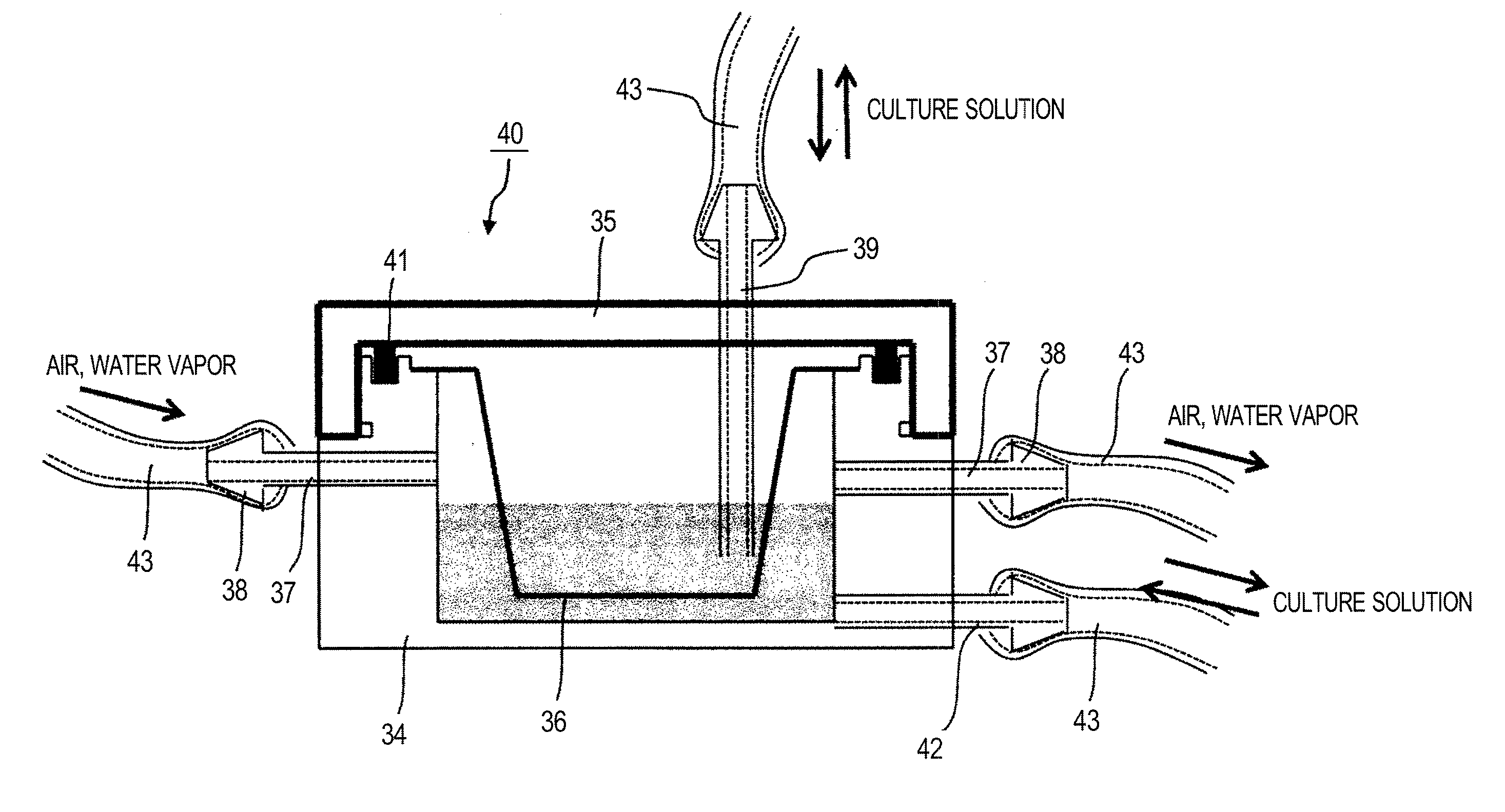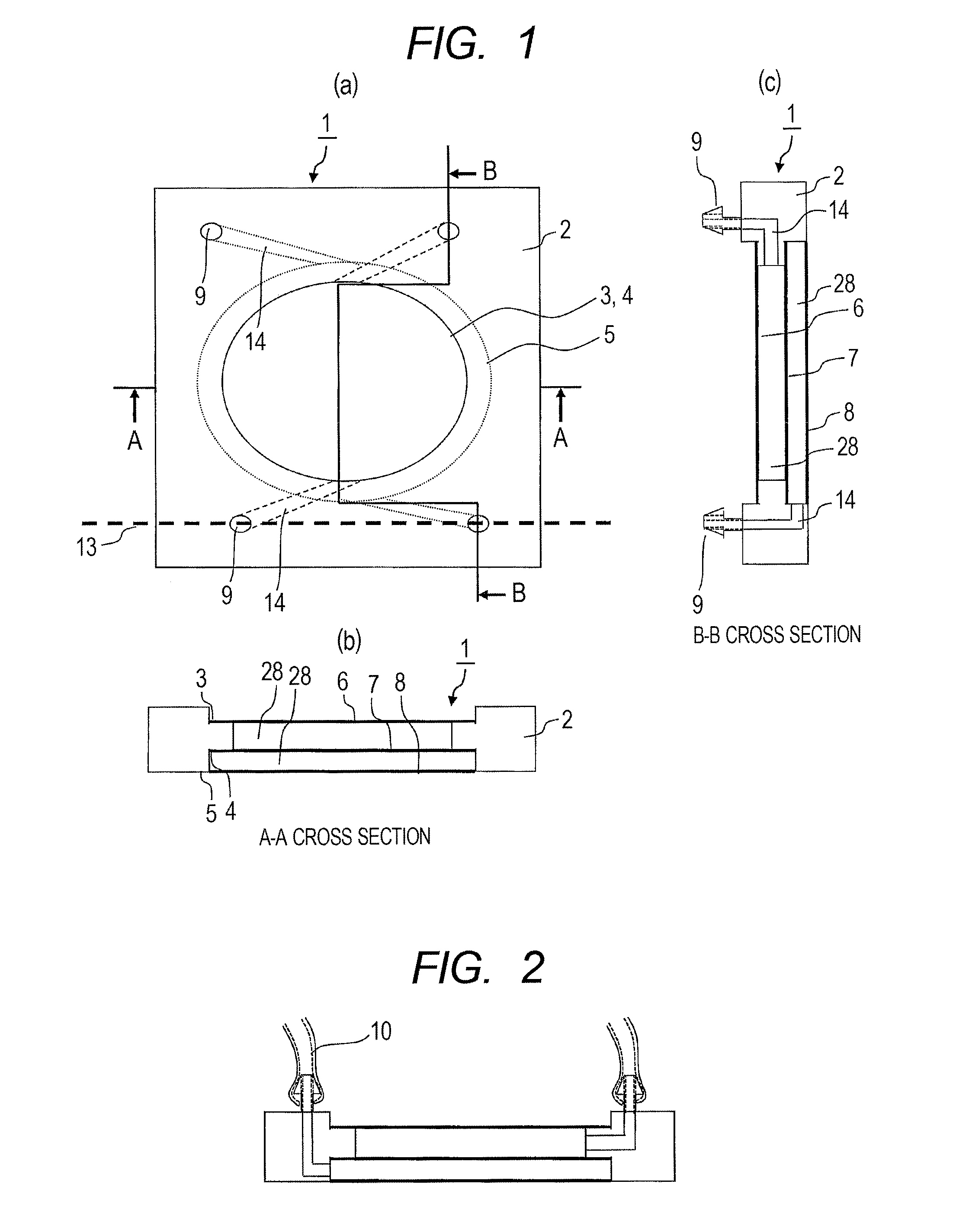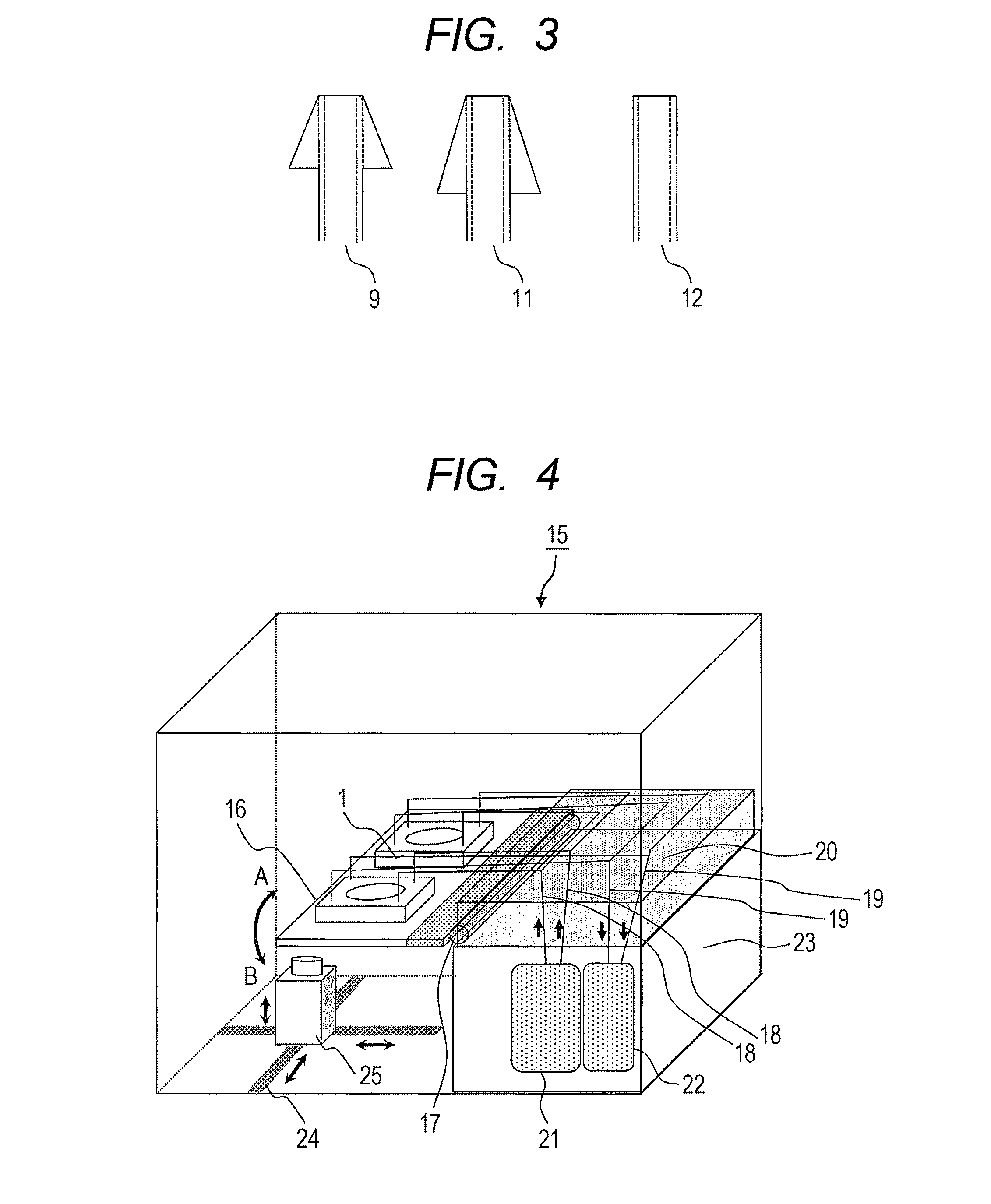Cell Culture Vessel and Cell Culture Device
a cell culture and cell technology, applied in the field of cell culture vessels and cell culture devices, can solve the problems of difficult to achieve double-layered culture, high cost and effort required to prepare cells for patients, and achieve the effect of peace of mind
- Summary
- Abstract
- Description
- Claims
- Application Information
AI Technical Summary
Benefits of technology
Problems solved by technology
Method used
Image
Examples
example 1
Structure of Cell Culture Vessel
[0045]FIG. 1 are views illustrating an example of the structure of a cell culture vessel in Example 1.
[0046]FIG. 1 (a) is a top view, FIG. 1 (b) is an A-A cross-sectional view thereof, and FIG. 1 (c) is a B-B cross-sectional view thereof. A cell culture vessel 1 is a regular quadrilateral and flat-shaped vessel and formed of a plastic having plasticity and rigidity, such as polycarbonate, polystyrene, polypropylene and the like. A frame body 2 is formed by injection molding, and circular sections 3, 4 and 5 are formed inside thereof. Moreover, a gas permeable film 6, a material permeable film 7, and a gas permeable film 8 are welded to the circular sections 3, 4 and 5, respectively. The welding of the gas permeable films 6 and 8 and the material permeable film 7 to the circular sections 3, 5 and 4 is preferably a thermal welding or ultrasonic welding, which does not use an adhesive that affects the viability of cells. In the present example, a double...
specific example 1
Method of Manufacturing Closed-System Cell Culture Vessel
[0065]First, the frame body 2 as shown in FIG. 1 was manufactured by injection molding (polycarbonate was used as a material). FIG. 12 illustrates an appearance of the frame body 2 actually manufactured. By means of an ultrasonic welding method, a gas permeable film was welded to the circular sections 3 and 5 in FIG. 1 and a material permeable film was welded to the circular section 4 in FIG. 1 (2000Xdt 40:0.8 manufactured by Branson Corp. was used as an ultrasonic welder). The film welded to the circular sections 4 and 5 in FIG. 1 was subjected to hydrophilic treatment with a plasma device (PC-300 manufactured by Samco Corp. was used as the plasma device). FIG. 13 illustrates an appearance of the vessel 1 in which the culture solution is held after each film is welded.
Method of Culturing Corneal Epithelial Cells
[0066]Subsequently, the method of culturing corneal epithelial cells using the cell culture vessel manufactured wil...
specific example 2
Temperature Responsive Polymer Treatment for Closed-System Culture Vessel and Corneal Epithelial Cell Culture
[0077]A temperature responsive culture surface was prepared by electron-beam polymerization of N-isopropyl acrylamide which is a monomer for temperature responsive polymers on the cell culture surface of the closed-system culture vessel. It was confirmed that the corneal epithelial cells had been normally attached to and detached from the present culture surface, and then a corneal epithelial tissue was prepared in the same manner as in Specific Example 1.
Peeling off Corneal Epithelial Cell Sheet
[0078]On day 16 of the culture, the culture solution was exchanged with a fresh culture solution at room temperature, and the culture solution was allowed to stand at room temperature (about 25° C.) for 30 minutes. Thereafter, as a supporting film, a hydrophilic PVDF membrane (manufactured by Millipore Corp.) cut in a doughnut shape was used to peel off and recover the cell sheet f...
PUM
 Login to View More
Login to View More Abstract
Description
Claims
Application Information
 Login to View More
Login to View More - R&D
- Intellectual Property
- Life Sciences
- Materials
- Tech Scout
- Unparalleled Data Quality
- Higher Quality Content
- 60% Fewer Hallucinations
Browse by: Latest US Patents, China's latest patents, Technical Efficacy Thesaurus, Application Domain, Technology Topic, Popular Technical Reports.
© 2025 PatSnap. All rights reserved.Legal|Privacy policy|Modern Slavery Act Transparency Statement|Sitemap|About US| Contact US: help@patsnap.com



